April 2020
April 30, 2020
Travel sack for dogs

Jalopnik draws attention to a similar, but sturdier-looking "bird's dog palace," also supported by a running board.

Posted By: Alex - Thu Apr 30, 2020 -
Comments (10)
Category: Dogs, 1930s, Cars
An Artificial Sun
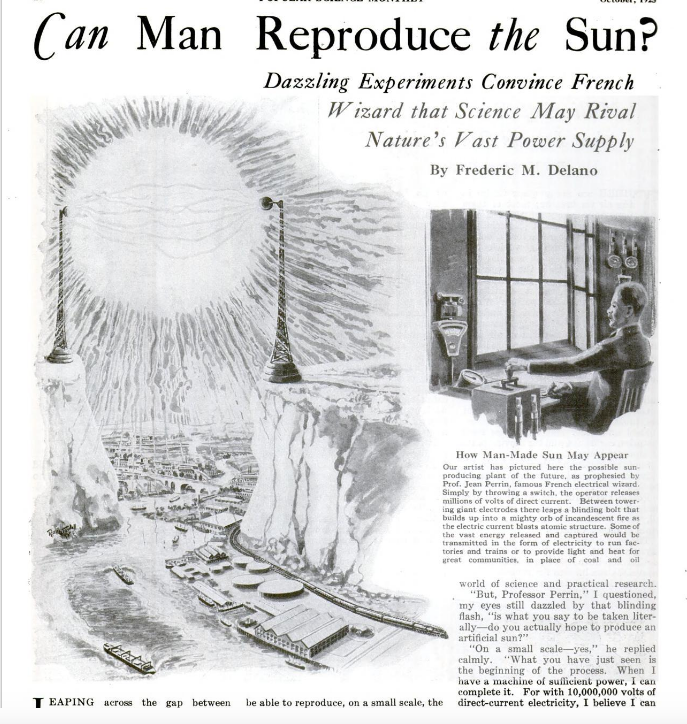
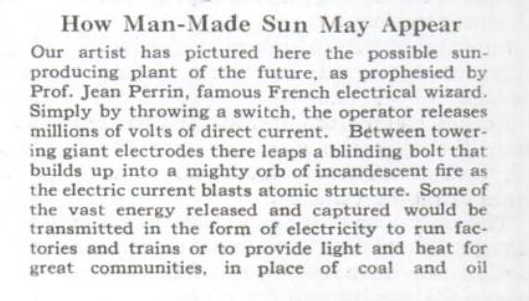
Read the whole piece here.
Posted By: Paul - Thu Apr 30, 2020 -
Comments (2)
Category: Armageddon and Apocalypses, Death, Destruction, Disasters, Technology, Crackpots, 1920s
April 29, 2020
Removing cockroaches from the ear: a comparative study
Back in 1985, doctors at an emergency room in Pittsburgh were presented with a woman who had somehow got cockroaches in both her ears. The doctors immediately decided this presented a rare opportunity to do a comparative study on methods of removing cockroaches from ears. They reported on their results in the New England Journal of Medicine, "Removing Cockroaches from the Auditory Canal: Controlled Trial," 1985, 312(18): 1197.A patient recently presented with a cockroach in both ears. The history was otherwise noncontributory. We recognized immediately that fate had granted us the opportunity for an elegant comparative therapeutic trial. Having visions of a medical breakthrough assuredly worthy of subsequent publication in the Journal, we placed the time-tested mineral oil in one ear canal. The cockroach succumbed after a valiant but futile struggle, but its removal required much dexterity on the part of the house officer. In the opposite ear we sprayed 2 per cent lidocaine solution. The response was immediate; the roach exited the canal at a convulsive rate of speed and attempted to escape across the floor. A fleet-footed intern promptly applied an equally time-tested remedy and killed the creature using the simple crush method.
However humble the method, and despite our small study population, we think we have provided further evidence justifying the use of lidocaine for the treatment of a problem that has bugged mankind throughout recorded history.
K. O'Toole, M.D.
P.M. Paris, M.D.
R.D. Stewart, M.D.
University of Pittsburgh School of Medicine
R. Martinez, M.D.
Louisiana State University

A subsequent letter to the journal noted a limitation of their report. In many cases, cockroaches get stuck in the ear canal. In which case, they can't just scurry out when sprayed with lidocaine. However, the correspondents offered a method of dealing with this situation. ("Removing cockroaches from the auditory canal: a direct method" NEJM. 1989. 320(5): 322).
As we burst into the room, we could see the young woman writhing from the combined sensations of movement and pain in her ear canal. One of us tok a look, confirming the nurse's diagnosis, while the other filled a 3-cc syringe with 2 percent lidocaine solution. With hurried anticipation we sprayed the drug briskly into the ear canal and quickly jumped back, fully expecting the beast to come hurtling forth at first contact with the noxious substance.
Nothing. "Increase the dosage," we shouted, filling a 10-cc syring. Still nothing. "Get that sucker outa my ear!" the patient screamed. What a brilliant idea! We grabbed a 2-mm metal suction tip and attached it to a wall suction apparatus with a negative pressure of 120 cm of water. Then we gently passed the tip into the ear canal, taking care not to occlude the canal and risk tympanic-membrane barotrauma. Shloop! "Got him!" we exulted. Sure enough, there he was, plastered to the suction tip like a fly to flypaper. After a repeat examination of the canal and a few drops of Cortisporin solution, the patient was on her way.
We recommend suction as a safe and efficacious method for removing insects from the ear canal when other methods fail.
Jonathan Warren, M.D.
Leo C. Rotell, M.D.
State University of New York
Health Science Center
Posted By: Alex - Wed Apr 29, 2020 -
Comments (0)
Category: Insects and Spiders, Medicine, 1980s
Nebula-75 - Episode One (A New For 2020 Supermarionation Drama)
Posted By: Paul - Wed Apr 29, 2020 -
Comments (1)
Category: Puppets and Automatons, Homages, Pastiches, Tributes and Borrowings, Science Fiction, 1960s, Twenty-first Century
April 28, 2020
Swiss Air Deluxe
Swiss Air Deluxe is Swiss air in a can. The makers promise that it offers a variety of health benefits. For instance, "airways and lungs will recover," "improves your blood values," "gives you energy for excercises, studies and work," and "much better potency and virility."
Recently, the makers of this stuff added a new product: Swiss Virgin. This is Alpine air "enriched with the lovely smell of real Swiss virgins who are living on the mountains." They add, "The sexy underwear is inside the can !"

Apparently, Swiss Air Deluxe is mostly sold in Asia. For which reason, a few months ago it was awarded the "Devil's Stone" Award, which is a satirical prize given annually to the most absurd freight-shipped product.
A representative from the company actually showed up to accept the prize, but defended the product, arguing, "We take advantage of unused spaces on transport boats when they return to Asia, so our ecological footprint is close to zero."
For some reason, Swiss Air Deluxe's website is currently down. But you can check out the cached version. And their product video below.
Posted By: Alex - Tue Apr 28, 2020 -
Comments (5)
Category: Products, Smells and Odors
The Trouble Shooter
Posted By: Paul - Tue Apr 28, 2020 -
Comments (0)
Category: Ineptness, Crudity, Talentlessness, Kitsch, and Bad Art, Technology, AI, Robots and Other Automatons, Outsider Art, Surrealism, Cartoons, 1950s
April 27, 2020
Mating Call of the Humboldt Penguin
Buy our speakers because they sexually excite penguins!
Posted By: Alex - Mon Apr 27, 2020 -
Comments (2)
Category: Advertising, 1980s
Matrimonial Delusions

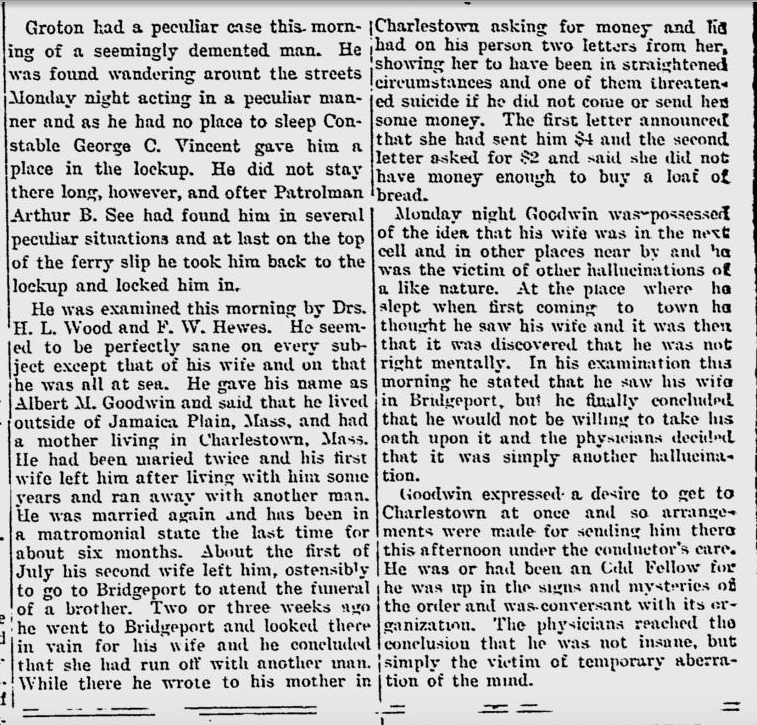
Source.
Posted By: Paul - Mon Apr 27, 2020 -
Comments (2)
Category: Bad Habits, Neuroses and Psychoses, Money, Husbands, Wives, 1900s
April 26, 2020
Informative Swimwear
In 2005, Robert Dickey and Ruth Stephens filed a patent application for "swimwear as information device." Their idea was to make a line of swimwear that displayed maritime signal flags. This would allow people to communicate messages to those around them via their swimwear. They explained:The possible messages one could send seemed limitless, but they were never granted a patent. Perhaps the idea of messages on clothing was deemed too obvious.
There's also the limitation that only people conversant with maritime signal flags could decode the messages, which would make the various 'stay away' messages somewhat pointless.
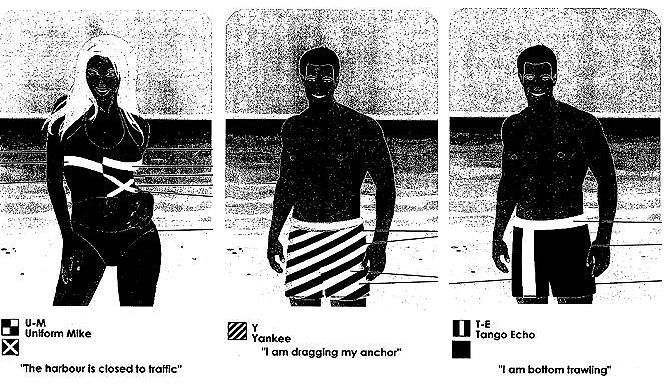
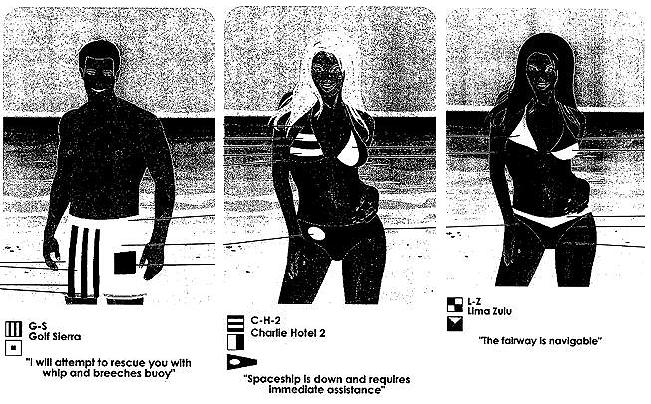
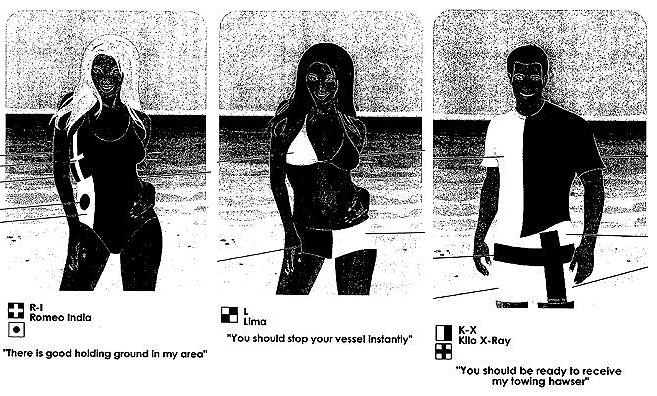
Posted By: Alex - Sun Apr 26, 2020 -
Comments (3)
Category: Boats, Fashion, Inventions, Patents, Languages, Double Entendres and Nudge-Nudge, Wink-Wink
Five Weird Bikes
Narration not in English, but unnecessary for enjoyment.
Posted By: Paul - Sun Apr 26, 2020 -
Comments (0)
Category: Bicycles and Other Human-powered Vehicles, Inventions
| Get WU Posts by Email | |
|---|---|

| Who We Are |
|---|
| Alex Boese Alex is the creator and curator of the Museum of Hoaxes. He's also the author of various weird, non-fiction books such as Elephants on Acid. Paul Di Filippo Paul has been paid to put weird ideas into fictional form for over thirty years, in his career as a noted science fiction writer. He has recently begun blogging on many curious topics with three fellow writers at The Inferior 4+1. Chuck Shepherd Chuck is the purveyor of News of the Weird, the syndicated column which for decades has set the gold-standard for reporting on oddities and the bizarre. Our banner was drawn by the legendary underground cartoonist Rick Altergott. Contact Us |

